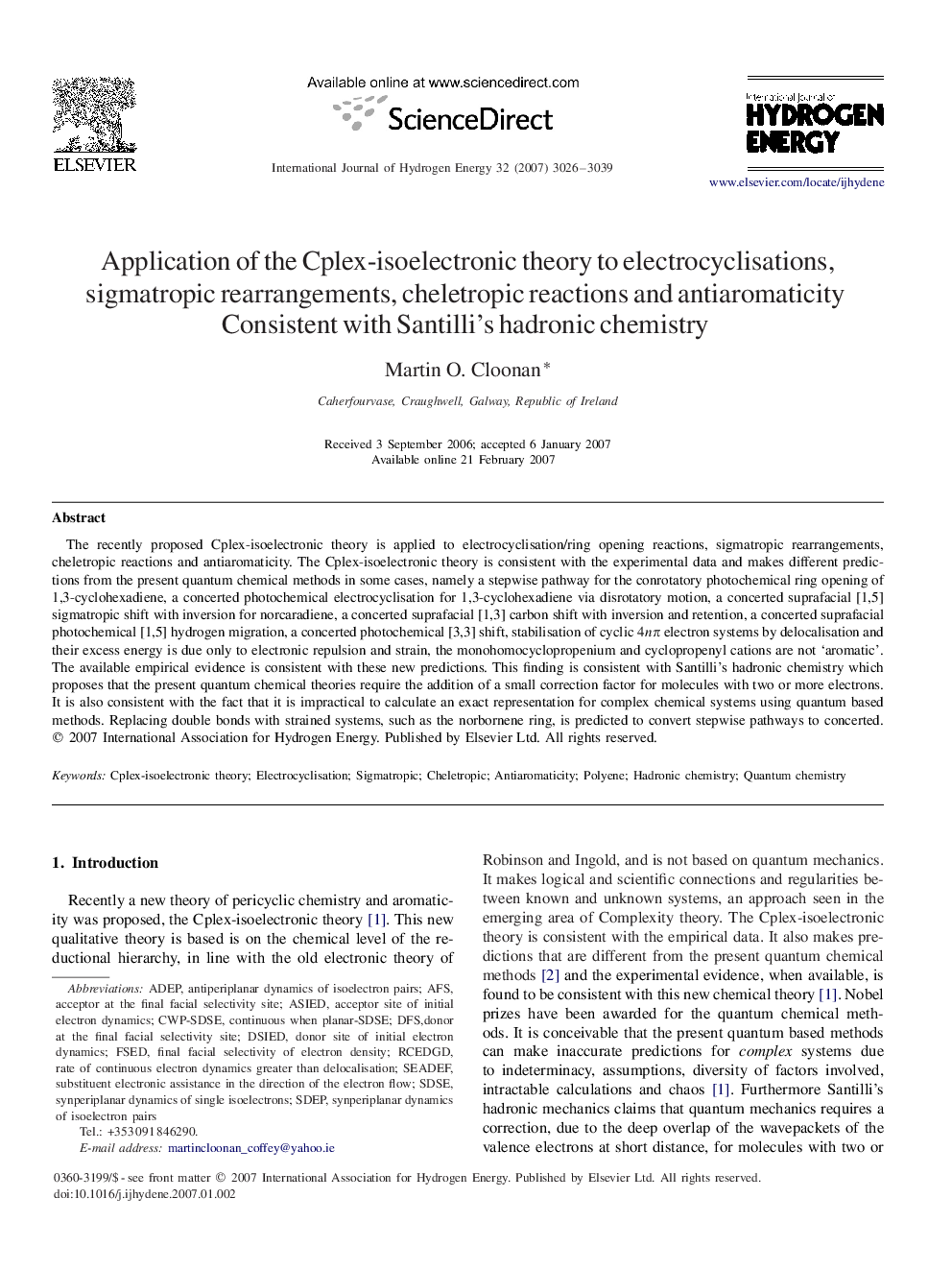| Article ID | Journal | Published Year | Pages | File Type |
|---|---|---|---|---|
| 1280206 | International Journal of Hydrogen Energy | 2007 | 14 Pages |
The recently proposed Cplex-isoelectronic theory is applied to electrocyclisation/ring opening reactions, sigmatropic rearrangements, cheletropic reactions and antiaromaticity. The Cplex-isoelectronic theory is consistent with the experimental data and makes different predictions from the present quantum chemical methods in some cases, namely a stepwise pathway for the conrotatory photochemical ring opening of 1,3-cyclohexadiene, a concerted photochemical electrocyclisation for 1,3-cyclohexadiene via disrotatory motion, a concerted suprafacial [1,5] sigmatropic shift with inversion for norcaradiene, a concerted suprafacial [1,3] carbon shift with inversion and retention, a concerted suprafacial photochemical [1,5] hydrogen migration, a concerted photochemical [3,3] shift, stabilisation of cyclic 4nπ4nπ electron systems by delocalisation and their excess energy is due only to electronic repulsion and strain, the monohomocyclopropenium and cyclopropenyl cations are not ‘aromatic’. The available empirical evidence is consistent with these new predictions. This finding is consistent with Santilli's hadronic chemistry which proposes that the present quantum chemical theories require the addition of a small correction factor for molecules with two or more electrons. It is also consistent with the fact that it is impractical to calculate an exact representation for complex chemical systems using quantum based methods. Replacing double bonds with strained systems, such as the norbornene ring, is predicted to convert stepwise pathways to concerted.
